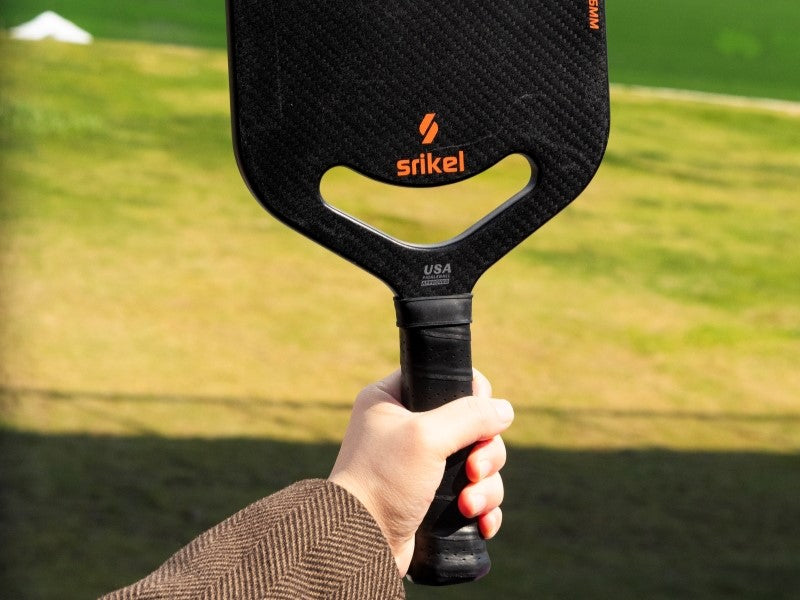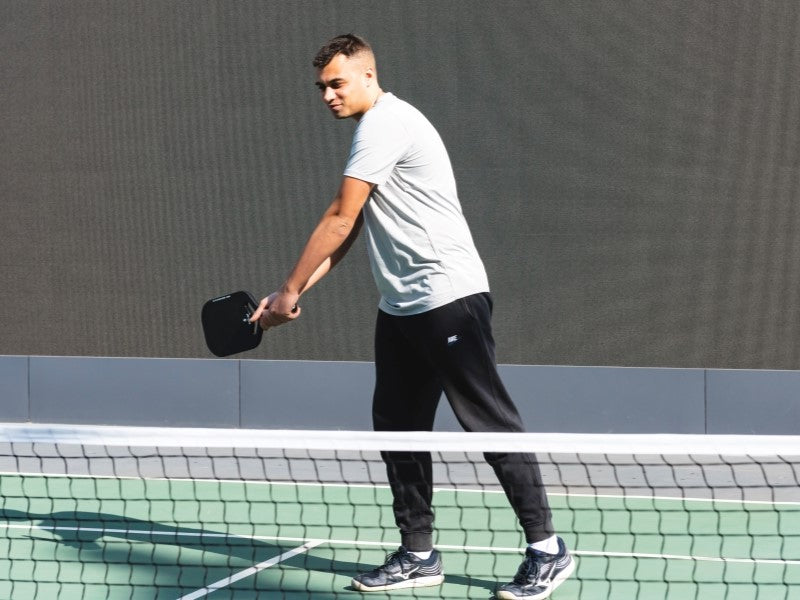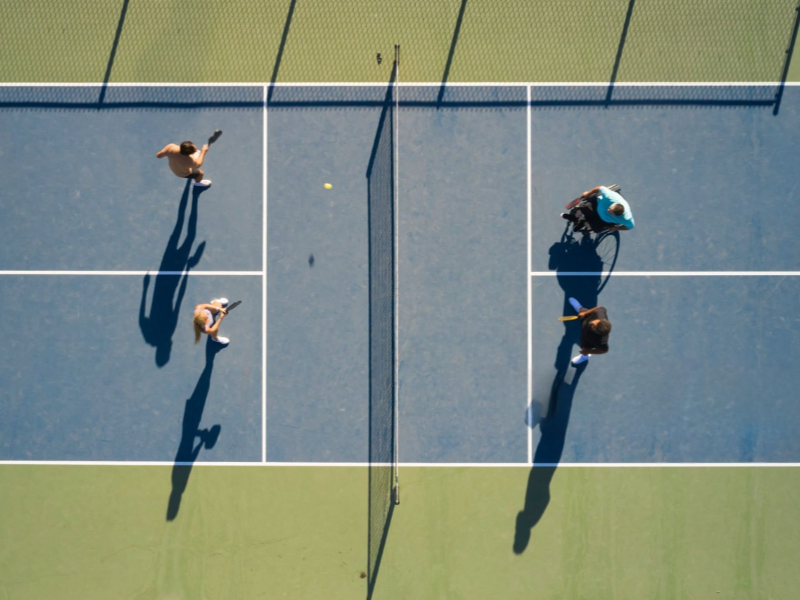Pickleball continues to grow as one of the fastest-rising sports in the world, attracting both casual and competitive players. As skills improve and players seek an edge in doubles matches, strategic techniques like stacking have become more widely used.
Whether you're new to pickleball or looking to elevate your doubles strategy, understanding stacking could be the key to unlocking better court positioning, stronger teamwork, and ultimately, more wins.
What Is Stacking in Pickleball?

Stacking in pickleball is a positioning strategy used primarily in doubles play. The basic idea is that instead of staying on their traditional sides of the court—left and right—players rearrange their positions at the start of a point to ensure that each player ends up on their preferred side of the court after the serve or return.
In traditional play, players remain in fixed positions based on the score—meaning the server and receiver rotate sides depending on whether the score is even or odd. With stacking, teams can manipulate positioning so that a stronger forehand, better mobility, or complementary playing styles are always on the side where they are most effective.
Stacking is most commonly used when one player has a clear strength on one side of the court, such as a strong forehand in the middle or better coverage near the net. Teams also stack to keep the more aggressive or experienced player in a dominant court position.
How Stacking Works in Practice
There are two key types of stacking: full stacking and partial stacking.
Full Stacking
In full stacking, both players on a team adjust their positions after each serve and return to ensure they end up on their designated side every time. This requires quick movement and good coordination. For example, if Player A prefers the left side and Player B the right, they will swap or "stack" even if the score dictates that they should start on opposite sides.
During the serve, the non-serving player may stand on the same side as the server, just behind them or off to the side, and then quickly move to the other side once the ball is in play. Similarly, during the return of serve, stacking may involve switching sides immediately after hitting the return.
Partial Stacking
Partial stacking is less complex and involves using the stack only when serving. Teams remain in their traditional positions during returns, making it easier to execute and understand while still benefiting from improved positioning on the serve.
Legal Rules Surrounding Stacking
Stacking is entirely legal in pickleball, but there are several rules that players must follow to avoid faults or violations:
- Correct Player Positioning At the moment of serve, both players must be in the correct court in relation to the score. If the score is even, the player who started the game on the right side must be on the right. If it’s odd, they must be on the left.
- Foot Faults The server must stand behind the baseline, and their partner must not interfere with the server’s space or movement. If the stacking player obstructs the server’s motion or stands in bounds improperly, a fault can be called.
- Receiver Positioning The returning player must receive from the correct service court. Stacking doesn’t change which player is the correct returner based on score. Failing to return from the correct side results in a fault.
To avoid violations, many teams use hand signals or verbal cues to stay aligned on positions and responsibilities during stacking transitions.
Benefits of Stacking in Pickleball
Stacking offers several strategic advantages for doubles teams, especially when players have distinct strengths and weaknesses. Here are some of the top benefits:
1. Maximizing Strengths
If one player has a dominant forehand or a more aggressive net game, stacking ensures they can use those strengths more often by positioning them on the side where they are most effective.
For example, a right-handed player on the left side of the court can use their forehand to cover the center, which is often the most targeted area during rallies.
2. Minimizing Weaknesses
Similarly, stacking allows teams to hide or protect a player's weaker side. If one player struggles with backhand returns, stacking can position them in a way that minimizes exposure to that shot.
3. Better Communication and Court Coverage
Experienced teams often have natural chemistry. Stacking lets them play to their communication strengths by staying on sides where they feel most in sync. This can lead to fewer unforced errors and smoother point construction.
4. Control of the Kitchen and Net
Stacking helps some teams maintain better positioning near the non-volley zone, or kitchen. For teams that rely on dinking and net play, having the more skilled net player consistently in front can dramatically improve rally outcomes.
5. Lefty-Righty Advantage
In teams where one player is left-handed and the other is right-handed, stacking can position both forehands toward the middle of the court. This configuration increases offensive coverage of the center and gives the team better shot-making opportunities.
Common Mistakes When Stacking
While stacking can be a game-changer, it’s also prone to mistakes, especially for newer teams unfamiliar with its execution. Here are some of the most common errors:
1. Confusing Positioning After Points
Players often forget who should be where based on the score. This can lead to serving from the wrong court or receiving out of turn, both of which result in automatic faults.
2. Poor Transitions After Serve or Return
Stacking requires players to quickly move into the correct positions after the serve or return. Hesitation or miscommunication can leave large gaps in the court and open up opportunities for the opposing team to exploit.
3. Obstructing the Server
The stacking player must ensure they are not standing in the way of the server’s motion. It’s common for newer teams to huddle too close or block the line of sight, leading to awkward serves or rule violations.
4. Overusing the Strategy
Stacking is not always necessary. If both players are well-rounded or the game is casual, constant stacking can complicate play more than it helps. Knowing when and how often to stack is just as important as understanding how to do it.
5. Not Practicing the Movement
Like any tactic, stacking needs practice. Teams who try to stack in a game without rehearsing the transitions and signals often find themselves confused or out of position.
As players begin incorporating stacking into their doubles strategy, several common questions tend to arise. Understanding these can help eliminate confusion and speed up your progress.

Frequently Asked Questions About Stacking
1. Can both players stand on the same side before the serve?
Yes, during stacking, both players can start on the same side of the court as long as the correct server is in the proper position according to the score. Once the ball is served, players may quickly move into their preferred stacked positions.
2. Is stacking allowed at all levels of play?
Absolutely. Stacking is legal and used at all levels—from recreational games to professional tournaments. However, it’s more commonly seen at intermediate to advanced levels due to the movement and coordination required.
3. How do we remember who should be on which side?
This is one of the biggest challenges. Teams often use verbal reminders, score tracking apps, or physical cues (like wristbands) to stay aligned. Practicing stacking patterns can also help make it second nature over time.
When Should You Use Stacking?
Stacking makes the most sense in competitive doubles matches where players have clearly defined roles or skill disparities. If your team includes a dominant player who thrives at the net or has a powerful crosscourt forehand, stacking will likely improve your odds.
It’s also useful in tournaments where small advantages can have a big impact. However, in recreational play or with evenly matched teams, the benefits may not always outweigh the complexity.
How to Practice Stacking Effectively
To get comfortable with stacking:
- Start with Partial Stacking Practice only on serve points to get used to switching positions.
- Use Visual Cues Colored wristbands or tape on paddles can help identify which side each player should be on.
- Drill Switching Movements Set up drills where one player serves or returns and both players practice moving to the correct stacked positions.
- Develop Communication Cues Hand signals, such as tapping the hip or flashing fingers behind the back, can help silently communicate who covers which side after a serve or return.
- Watch Competitive Play Observing experienced players or professional pickleball matches can give you a better sense of how and when stacking is used effectively.
Stacking in pickleball is a strategic approach to court positioning that can help doubles teams play to their strengths, reduce weaknesses, and gain a competitive edge. While the concept may seem complex at first, learning the rules, understanding the benefits, and avoiding common mistakes can make stacking a powerful tool in your gameplay.
Whether you’re just learning the basics or looking to refine your competitive edge, stacking is a tactic worth exploring. With consistent practice, strong communication, and a focus on smart positioning, you and your partner can turn stacking into a winning advantage.









Leave a comment
This site is protected by hCaptcha and the hCaptcha Privacy Policy and Terms of Service apply.